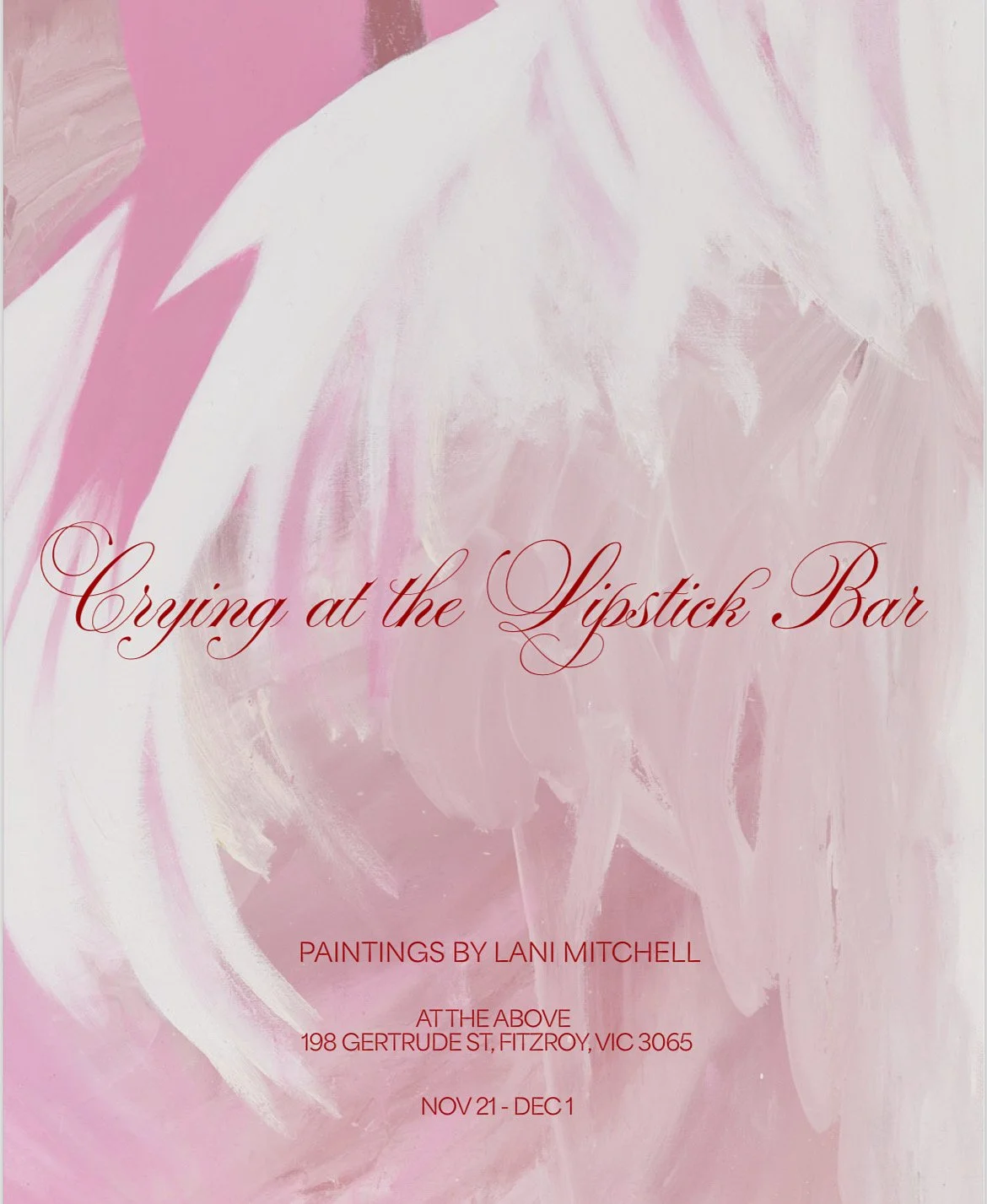UPCOMING
AN EXHIBITION OF NEW PAINTINGS
Lani Mitchell’s latest body of work, Crying at the Lipstick Bar, traverses the fault lines of longing, grief, and hope. This series of large-scale paintings conjures an alchemic landscape - fragmented, tender, and perpetually in motion. It is a dialogue between memory and desire, sorrow and future possibility. Mitchell fuses themes of idealism and the eternal pursuit of beauty with the raw earthiness of grief. Saturated reds and luminous pinks are set against muted creams and whites, the palette itself a meditation on absence and persistence. These works carry the spectral weight of personal loss: the death of Mitchell’s godfather David and close friend Julie. Their absence lingers in the air, yet their memory - vivid, intimate, unshakable - fuels the paintings’ emotional charge. The medium becomes the vessel. Thick oil paint, worked over days and months in the studio, absorbs the rhythm of mourning. Each brushstroke is both a mark and a memory, weaving past into present. Figures and landscapes hover in suspension, half-formed and elusive, caught between worlds: the living and the dead, the known and the unknowable. In this way, the paintings become not only images but thresholds. Loss here is not treated as void, but as gesture - a reaching toward love, beauty, and the persistence of spirit. Paris, once alive with romantic anticipation, emerges as a symbolic site of grief and revelation. Roses and lipstick kisses - tokens Mitchell and her loved ones once asked Julie to send as signs of her presence - appear throughout the work. Lipstick, a bouquet of roses,: the everyday made sacred through remembrance. Colour carries symbolic weight throughout the series. Red, embodied in lipstick but also in blood, becomes a marker of aliveness - an imprint that insists presence. White hovers as the counterpoint, asking the unanswerable: where does life, once vivid, go? Between them, pink emerges as play, a gesture of glamour and theatre, an insistence on lightness within heaviness. These tones are not literal but gestural, each mark a record of presence, of memory pressed into paint. The palette itself becomes ritual: a dance between vitality, absence, and the traces left behind.
The title Crying at the Lipstick Bar carries both weight and theatre. It is cinematic, sorrowful, and knowingly heightened but its symbols are deeply personal. There is a theatricality here, but not to undercut tragedy. Instead, Mitchell embraces camp as part of life’s dance: a gesture of survival, a way to honour beauty and ritual while acknowledging that death, too, is inevitable. In this balance of mourning and performance, grief becomes not just an ending, but a profound act of living. This embrace of theatre recalls the words of David, who often reminded Mitchell that “it’s all a bit of fun.” His outlook on life, playful yet profound, lingers in these works. The paintings hold this paradox close: that even as we grieve, we can accept life’s inevitable ending with a spirit of vitality, humour, and love. The paintings oscillate like grief itself: sadness, desire, and fleeting hope in quick succession. Their fragmentary palette - ochres, cadmiums, muted purples, overlaid with veils of white - mimics the erosion of memory, its ghostly persistence, its refusal to fully fade. At its core, Crying at the Lipstick Bar is both elegy and celebration: an embrace of life in contradiction. These works acknowledge devastation but insist on beauty, however fragile. They remind us that grief is cyclical, that mourning can coexist with yearning, and that hope, however delicate, endures.
“If you are going to cry for me, cry for me in Paris.” This imagined directive becomes the exhibition’s refrain: a call to mourn and to live, to weep and to dance, to hold close the extraordinary flickers of beauty that persist even in loss.

